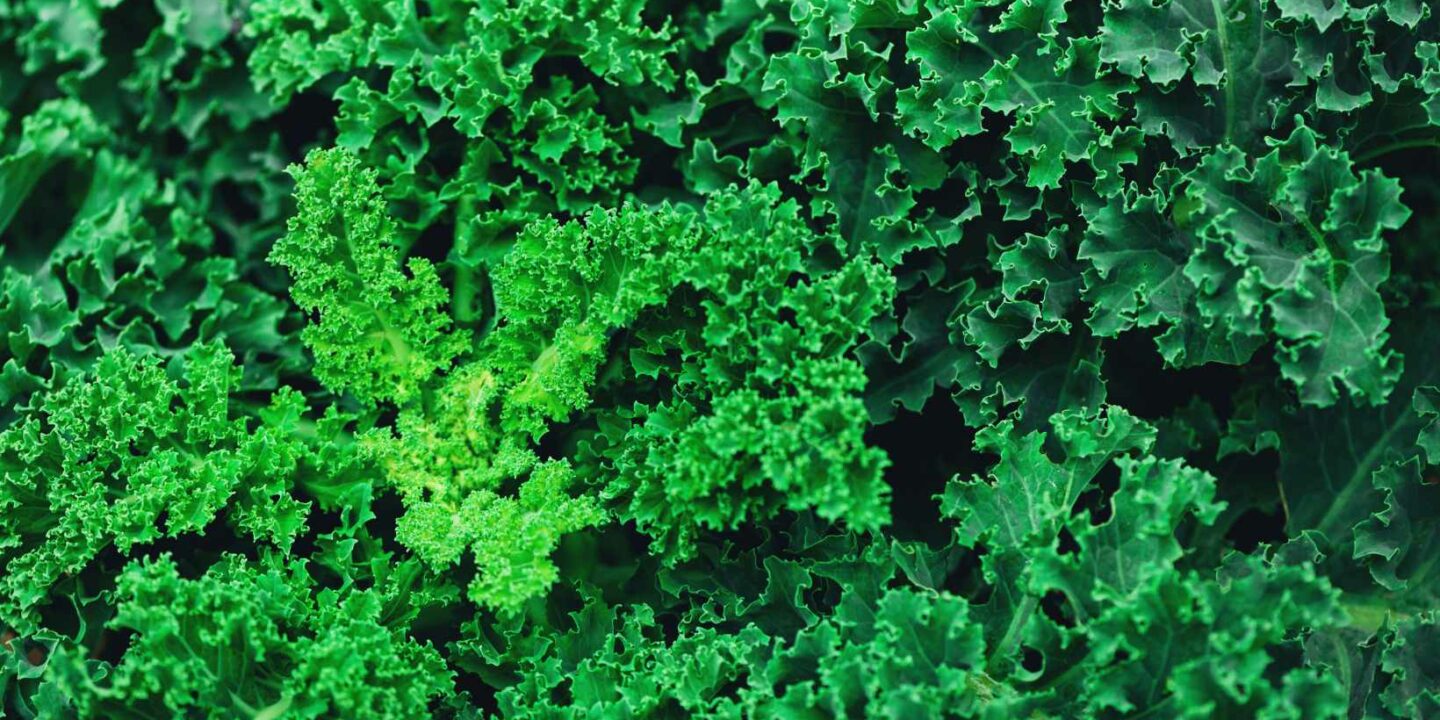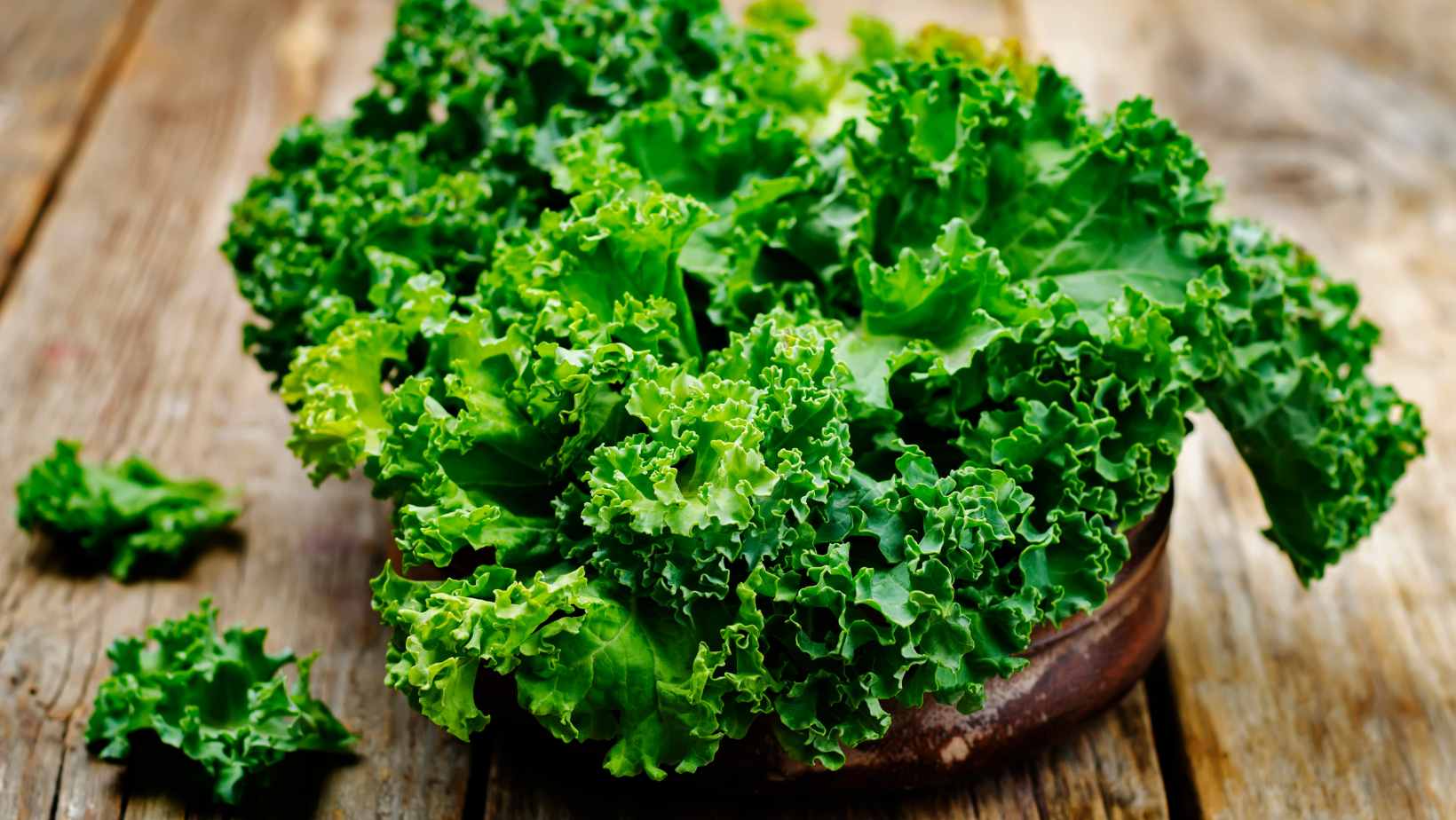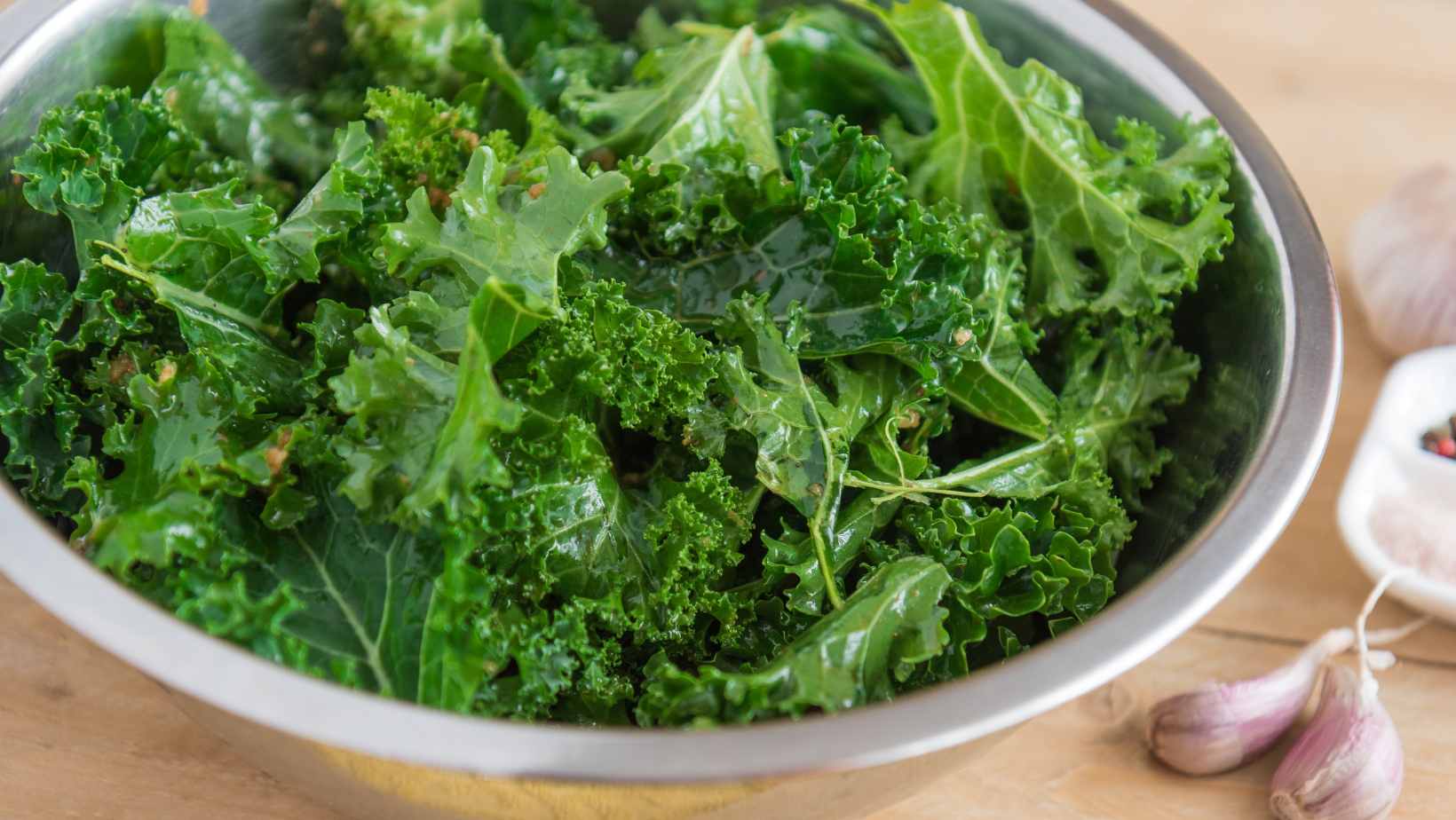
Kale: A Nutrient-Packed Leafy Green
Kale, a member of the cruciferous family, is a leafy green packed with essential nutrients. With its high levels of vitamins A, C, and K, as well as fiber and protein, kale has numerous health benefits. Additionally, it contains antioxidants that help to protect against diseases such as cancer.
The leafy green also provides a good source of iron and calcium which are essential for healthy bones and blood production. Furthermore, kale can be added to various dishes such as smoothies, salads or even made into chips for a nutrient-packed snack.
For optimal nutrition benefit from kale, it is recommended to eat it raw or lightly steamed as overcooking may result in a loss of nutrients. Moreover, choosing organic kale will reduce the risk of exposure to pesticides.
Eat your greens, they said. But little did they know, kale is the superhero of lettuces, packed with more nutrients than your ex’s new love interest.
Nutritional Benefits of Kale
To explore the nutritional benefits of kale and why it’s a great addition to your daily diet, dive into the following sub-sections: High in vitamins A and C, rich in antioxidants, excellent source of calcium, low in calories, high in fiber.
High in Vitamins A and C
Kale is a wholesome leafy green vegetable that provides several essential nutrients, including Vitamins A and C in high quantities. These two vitamins are crucial for various body functions, such as maintaining healthy skin and eyesight.
- Vitamin A aids in boosting immunity, supports bone growth, and helps organs like the heart, lungs, and kidney function correctly.
- Vitamin C is an antioxidant that protects against damage from environmental stressors to fight off chronic illness. It enhances collagen production for healthy skin and tissue repair.
- Kale’s combination of vitamins strengthens immunity and fights inflammation, making it an exceptional choice among other food sources.
- One cup of raw kale fulfills a person’s daily requirement of vitamin A while offering more than twice their daily dose of vitamin C.
- Both vitamins benefit people who want to maintain healthy skin, heal wounds faster or improve their eyesight.
Studies show that incorporating kale into your diet can benefit your health by reducing cholesterol levels, managing diabetes possibilities, safeguarding the body over cancer development and cleansing toxins.
Kale is an adaptable vegetable found in many dishes such as smoothies or salads. Try adding it to your pasta sauce or soup recipes for some extra nutrients without altering their flavor. You can also roast them for a crispy snack rich with fiber. To obtain all the essential nutritional benefits from Kale one should consume it at least 2-3 times per week.
Adding Kale to our menu plans incorporates wholesomeness into our daily lives with vast health benefits rather than just being aware that its high content of Vitamin A & C makes it ideal for eye sights or healthy skin; thus don’t limit its credit only to the two essentials mentioned but share to enjoy all its properties beneficial for health optimization.
Kale may not make you invincible, but the antioxidants found in this leafy green will certainly give your immune system a fighting chance.
Rich in Antioxidants
Kale is a nutrient-dense green leafy vegetable with a high concentration of antioxidants, including carotenoids and flavonoids. These compounds are known to reduce oxidative stress in the body by neutralizing free radicals. Antioxidants in kale also contribute to improved cellular function and reduced risk of chronic diseases such as cancer, cardiovascular disease, and diabetes.
In addition, kale’s rich antioxidant profile provides excellent protection against inflammation, which is often linked to a variety of health concerns. Consumption of kale has been associated with a decreased risk of inflammatory diseases such as arthritis and asthma. Studies suggest that the anti-inflammatory properties of kale are due to its high content of polyphenols, vitamin C, and other phytonutrients.
Moreover, kale contains unique sulfur-containing compounds called glucosinolates that have potent anti-cancer properties. These compounds help the liver detoxify carcinogenic substances by increasing the production of enzymes that counteract chemical toxins.
According to research by the National Cancer Institute, consuming just one cup of raw kale daily can significantly reduce the risk of various cancers. The study was conducted on over 135 thousand individuals over several years, making it a credible source to support the benefits of kale consumption for cancer prevention.
Eat your kale, get your calcium, and stay strong enough to deal with all the haters who think it’s just a fancy garnish.
Excellent Source of Calcium
Kale: A Calcium-Rich Superfood
Kale is a nutrient-dense leafy green that offers numerous health benefits, including being an excellent source of calcium. With one cup of cooked kale providing 9% of the daily recommended intake, it’s a fantastic addition to any diet.
Not only does kale offer a substantial amount of calcium per serving, but it also contains other crucial nutrients that promote bone health, such as vitamin K and magnesium. The high calcium content in kale makes it an optimal dietary choice for individuals who cannot or choose not to consume dairy products.
Incorporating kale into your meals is easy and versatile. From adding it to smoothies or salads to using it as a sauteed side dish, there are countless tasty ways to enjoy this superfood’s benefits.
Don’t miss out on the chance to add more calcium to your diet with the help of kale. Give this nutrient powerhouse a try and see how quickly you’ll reap the rewards in terms of overall health and wellness.
Kale may be low in calories, but it’ll definitely give your taste buds a workout compared to the boring old lettuce.
Low in Calories
Kale Provides Low Caloric Intake!
Kale, a cruciferous vegetable, is an excellent source of nutrition and has gained immense popularity in the culinary world. Its low caloric content makes it ideal for weight loss programs, but it is also great for improving overall health.
- One cup of kale contains only 33 calories, making it an ideal food choice for individuals seeking to maintain a healthy weight since it can be consumed in large quantities without exceeding daily calorie intake.
- Kale is a nutrient-dense food rich in fiber, essential vitamins, and minerals that help support overall health while still being low in calories.
- Unlike other low-calorie foods, kale still has enough bulk to make you feel full, which can reduce food cravings and prevent snacking between meals.
Incorporating kale into your diet not only helps with weight management but also plays a role in the prevention of various chronic diseases. Kale stimulates detoxification enzymes within the liver that help remove cancer-causing substances from the body.
Historians conjecture that kale was first cultivated around 2,000 years ago in ancient Greece. Farmers grew it for medicinal benefits rather than culinary use – using methods such as oral administration for urinary disorders and poultices made with it for wound healing. Today Kale remains an irreplaceable ingredient characterized by its nutritional benefits.
Eating kale is like hiring a personal plumber for your colon.
High in Fiber
Kale, the superfood, has a remarkable characteristic of being high in dietary fiber. It is one of the most beneficial features that make Kale stand out from other veggies.
Here are six points explaining the nutritional benefits of kale’s high fiber content:
- Kale contains both insoluble and soluble fibers that support colon health and help lower cholesterol levels.
- Fiber in kale can reduce postprandial glucose levels, making it an ideal food option for those with diabetes or people trying to regulate their blood sugar levels.
- High fiber intake helps improve digestion and regularity. It also makes one feel fuller, which can aid in weight loss efforts by reducing overall calorie intake.
- Kale’s fibrous nature supports satiety, making it a great addition to any diet when trying to control hunger cravings.
- Fiber in Kale acts as a prebiotic that feeds gut bacteria, helping maintain healthy microflora essential for overall health and well-being.
- Consuming adequate amounts of fiber from foods such as kale can enhance our body’s immunity and reduce inflammatory responses.
It is noteworthy that consuming raw Kale provides more fiber than cooked Kale. The richness of nutrients reduces when cooked in boiling water for prolonged periods.
Pro Tip: To maximize the nutritional benefits, experts suggest including a serving of Kale daily in your regular diet.
Is Kale a lettuce? Please, that’s like asking if Arnold Schwarzenegger is the same as Justin Bieber.
Is Kale a Lettuce?
To understand whether kale is a lettuce or not, you need to understand the distinct characteristics of kale, compare it with lettuce, and learn about the different types of kale. This will give you a clearer idea of the nutritional benefits of kale and how it differs from lettuce.
Distinct Characteristics of Kale
Kale’s Distinguished Features
Kale is a form of leafy green vegetable that has distinctive properties that distinguish it from other vegetables. It is packed with numerous nutrients and vitamins such as vitamin K, calcium, fiber and antioxidants.
The following table highlights distinct characteristics of kale:
| Characteristic | Description |
| Appearance | Dark green leaves with a veiny texture |
| Taste | Slightly bitter taste compared to lettuce |
| Growing Conditions | Requires colder temperatures and can tolerate frost better than lettuce |
| Nutrient Content | Rich in Vitamin K, C, A, Calcium and Antioxidants |
Furthermore, kale’s leaves are tougher and have a somewhat rough texture which makes them perfect for cooking methods like sautéing, roasting or adding them in soups. Additionally, unlike lettuce varieties which might wilt or go bad within days of purchasing, Kale has an extended shelf life of up to weeks when stored properly.
It’s important to note that despite being in the same family as lettuce (Asteraceae), kale is classified under the Brassica oleracea species commonly known as cruciferous vegetables.
Fun Fact: Kale was once known as ‘the poor man’s food’ but has now become one of the trendiest superfoods in the market today. According to The Guardian UK newspaper, sales of kale increased by an impressive 40% between 2013-2014 alone!
Let’s be real, kale and lettuce are like long lost cousins who can’t decide who’s the better salad ingredient.
Comparison with Lettuce
Kale and lettuce are vegetables that share a lot of similarities. They both belong to the same family, Asteraceae, and are leafy greens. To compare kale and lettuce, let’s have a look at their nutritional value, taste, and appearance.
| Kale | Lettuce | |
| Nutritional Value | High in fiber, vitamins A, C & K1 and minerals such as calcium & iron. | Lower in nutrients than Kale. |
| Taste | Bitter or earthy flavor. | Mild or slightly sweet flavor. |
| Appearance | Dark green-colored curly leaves with rough texture. Firm stem. | Lighter green-colored large, smooth or curly leaves. |
Kale and Lettuce differ significantly from each other in terms of nutritional value, taste and appearance.
Pro Tip: Incorporate Kale into your diet for a boost of nutrients like calcium and iron. Why settle for just one type of kale when you can have a kaleidoscope of options?
Different Types of Kale
Kale Varieties Explained
Kale, a highly nutritious vegetable, has different varieties that vary in taste, texture, and appearance. Here is a list of some common types of kale.
| Varieties | Description |
| Lacinato Kale | Also known as Tuscan Kale or Dinosaur Kale; dark green with long, narrow leaves; milder taste compared to curly kale |
| Curly Kale | The most common variety; texture is tough and fibrous; curly leaves with a bright green color |
| Red Russian Kale | Flat leaves with purple stems; milder taste than curly kale and easier to chew when raw |
| Siberian Kale | A hardy variety with blue-gray leaves that can survive colder temperatures |
Kale is also rich in vitamins A, C, K and antioxidants. Consuming this cruciferous vegetable regularly can lead to numerous health benefits such as lower cholesterol levels and reduced risk of cancer.
Incorporating kale in the daily diet is an interesting challenge. The many varieties allow for experimentation from salads to sautés. I personally discovered Lacinato kale while traveling through Italy last year. I was served an amazing plate of grilled Lacinato with fontina cheese that made me fall in love with the leafy vegetable.
Who needs a personal chef when you have kale? It can make any dish taste healthy, even if it’s drowning in cheese and cream.
Cooking with Kale
To master cooking with kale effectively, in order to keep yourself healthy – recipes using kale, best cooking methods, and tips for preparing kale will be helpful solutions.
Recipes using Kale
Kale is a highly nutritious vegetable that can be used in various recipes to make healthy and flavorful meals. Here are six unique ideas for incorporating this superfood into your cooking:
- Kale Caesar salad with croutons and Parmesan cheese
- Vegetable stir-fry with kale and broccoli
- Green smoothie with kale, spinach, and bananas
- Kale chips baked with olive oil and sea salt
- Spicy lentil soup with kale and carrots
- Baked ziti with kale, ricotta, and mozzarella cheese
In addition to being delicious, kale is packed with nutrients like vitamin K, vitamin C, beta-carotene, calcium, and iron. To get the most out of this vegetable, consider massaging it first to reduce bitterness or blanching it briefly before using it in recipes.
Pro Tip: Use leftover cooked kale in soups or stews for an added boost of flavor and nutrition.
If you thought cooking with kale was boring, try deep-frying it and watch your taste buds do a happy dance.
Best Cooking Methods
For those seeking to explore the most optimal ways of cooking with kale, there are various effective cooking techniques available. Below is a comprehensive table that showcases different methods and their corresponding results:
| Cooking Method | Result |
| Boiling | Soft, tender texture; loss of nutrients |
| Steaming | Retains nutrients; bright green color; slightly firmer texture |
| Sauteing | Quick and easy; crispy texture, but may lose some nutritional value |
| Roasting | Intensifies flavor, crispy texture; more time-consuming than other methods |
It’s important to note that while each method yields different results, they are all capable of producing delicious and nutritious dishes using kale. One crucial detail worth mentioning is to avoid overcooking kale as it may result in a bitter taste and decrease its nutrient content. As a pro tip, consider trying different combinations of these cooking methods to achieve your desired outcome. Whether you’re looking for soft and tender or crunchy and crispy textures, the possibilities with kale are endless. If you thought kale was tough, try telling your Italian grandmother that you’re substituting it for spinach in her favorite recipe.
Tips for Preparing Kale
Kale Preparation Techniques
Kale is a highly nutritious green leafy vegetable that can be consumed in various forms. Here are some tips to prepare kale effectively.
- Always wash the kale thoroughly before cooking or eating.
- Remove the tough stems by holding the stem with one hand and running your other hand along the stem, pulling the leaves off.
- For raw dishes, such as salads, massage the leaves gently to break down its fibers and enhance its flavor.
- If you’re planning on cooking kale, it’s best to blanch or steam it first before adding it to a recipe.
Interestingly, Kale chips make for a healthy alternative to potato chips. Give them a try!
Pro Tip: Mix things up by using baby kale or lacinato (dinosaur) kale in your recipes. Their milder flavor makes them a great choice for those not too fond of traditional kale.
Whether you love it or hate it, kale always ends up in your salad bowl – just like your crazy aunt at Thanksgiving dinner.
